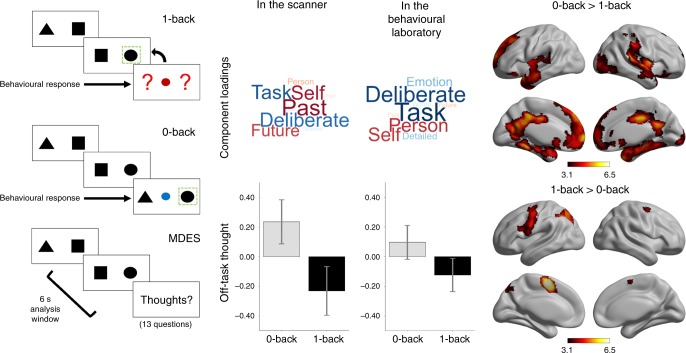Fig. 1.
0-back and 1-back tasks vary in their need for external attention in the scanner and the laboratory. Participants performed alternating blocks of two tasks (left). In the 0-back task, off-task thinking was increased (middle) in both the laboratory and scanner. The application of principal component analysis to MDES data identifies dimensions of thought by grouping questions that capture shared variance. One component identified in this manner captures a dimension that varies from a focus on the task to thoughts about the self and other and with an episodic focus, corresponding to one common definition of off-task mind-wandering70. The loadings on this component are presented in the form of wordclouds. Words in a larger font indicates items with a greater loading on the dimension and the colour describes the direction of this loading (red: positive, blue: negative). The average score for this off-task dimension of thought in each task is shown in the bar graphs in which the error bars indicate the 95% confidence intervals of the mean. Contrasts comparing neural activity across these conditions showed increased activity in default mode network regions during the 0-back, and left lateralised frontal and parietal regions during the 1-back (right). Task maps are corrected with a cluster-forming threshold of Z > 3.1, at a family-wise error rate of p < 0.05

